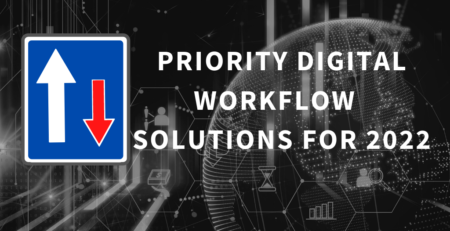Enhanced Order Processing Technologies for Automation
There have been many attempts to use technology to automate sales order processing which have had varying degrees of success. This article examines some of the legacy and latest order processing technologies and considers the merits of different approaches.
EDI represents the most effective way to transmit data between customer and supplier. Effectively, an agreed format of data exchange in a given method. However, it has its own challenges in terms of cost to implement and maintain as well as a reliance on both parties being able to recognise a benefit. EDI falls short where the order process is more complicated and the order itself is only part of the documentation and workflow required for the process to operate. It is also limited to high volume transactions from high volume customers; generally failing to be effective for the less frequent customers.
More information on the spectrum of sales orders can be found here
OCR has often been the tool of choice for non-EDI orders. This relies on OCR engines attempting to recognise and extract data from order documents. Traditionally, these were paper or fax documents and there were challenges in first having a high enough quality image, before then attempting to read data automatically from the page. Now, these orders tend to manifest themselves as PDF attachments which are easy to send, but no less of a burden to process.
Legacy technologies in this space were highly reliant on templating documents to determine the location of text for specific customer orders and then performing extraction accordingly. Whilst initial results tended to be reasonably high in terms of automation, systems would systematically degrade as new customers came on-board with new order formats and existing customers modified order templates. This meant declining rates of automated recognition or high maintenance costs to maintain accuracy and system benefits.
Today, whilst EDI remains viable for many high-volume transaction customers, advances in order processing technologies can help to automate sales orders from non-EDI channels.

Cognitive Capture
Cognitive Capture technologies represent a significant advancement on OCR systems in allowing documents to be processed in a way which is more aligned to how humans process documents. Machine Learning empowers Artificial Intelligence ensure that the system is capable of learning in production and are invaluable order processing technologies . There is still a need to conduct some initial base system setup, but using a live training process it becomes possible to allow the system to become smarter over time which ensures that the base implementation improves over time as opposed to degrading.
More information on the difference between OCR and Cognitive Capture can be found here:
Cognitive Capture technologies are used to monitor email inboxes, extract PDFs and other document formats like Excel and HTML, and then extract relevant content.
Process Automation
Where complex business processes exist, technology-enabled automation can be applied to simplify operational elements, drive digital transformation improve service quality and deliver costs savings. This can range from using workflow technologies to route order documents to different people or departments, triggering sub processes that may be needed for quality control or compliance as well as moving data between external and internal systems using robotic process automation to eliminate manual, mundane and repetitive activities.
Process Insight
Where highly automated environments exist, there is a need to ensure checks and balances exist to ensure that processes are operating as required. This can take two primary forms:
- Platform Data
This takes the form of understanding how well the technology is performing, from monitoring infrastructure right down to examining automation recognition rates at an individual field level. The main purpose is to ensure that there is harmony between operational effectiveness and automation.
- Process Data
This typically manifests itself as measurement of core business objectives within order processing such as; cost per order, average processing times, compliance with mandated process steps etc. Mostly, this is made available by easily consumable, real-time dashboards that provide complete visibility to those in the organisation that need this information.
Benefits of a Platform Approach
Integrating technology components can be costly and time-consuming and there are many considerations to manage along the way, more information can be found here on effective integration techniques. By thinking holistically about the non-EDI sales order process, and the fact that it is rarely just a data extraction problem that needs resolving, it makes sense to reduce the number of technologies deployed to solve the various parts of the process. In doing so, consideration should be given to a platform approach that incorporates the different elements of leading technology that will provide maximum effectiveness for minimal deployment effort.
In addition a platform based approach, lends itself for deployment of other finance and non-finance based processes that can also benefit from these order processing technologies.
More information on the benefits of deploying intelligent process automation technologies can be found here











